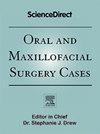肿瘤转化:一例年轻男性骨化纤维瘤切除术后转化为骨肉瘤
Q3 Dentistry
引用次数: 0
摘要
骨化纤维瘤(OF)是一种生长缓慢、复发风险低的良性纤维骨肿瘤,主要影响年轻女性的下颌骨。虽然OF通常是非侵入性的,但很少有病例表现出局部侵袭性行为,需要手术切除。骨肉瘤是一种罕见的恶性肿瘤,在颌骨中发病率为百万分之0.7,非常罕见。本文报告一例罕见的28岁男性患者,最初诊断为骨化性纤维瘤,通过手术切除和髂骨移植重建。尽管边缘呈阴性,但病变在一个月内恶性转化为纤维母细胞骨肉瘤,给诊断和治疗带来了挑战。通过组织病理学和免疫组化评价证实了恶性转化,显示Ki-67标记指数高(60%),表明肿瘤具有侵袭性行为。在多学科肿瘤委员会讨论后,患者接受了广泛的手术治疗,包括复合切除术、下颌骨节段性切除术、颈部剥离术和腓骨骨皮皮瓣重建微血管。尽管罕见,该病例强调了对肿瘤切除术后复发或进展性病变的警惕随访和全面诊断的必要性。本报告补充了有限的关于纤维骨病变恶性转化的文献,强调了区分良性和低级别恶性肿瘤的重要性,并讨论了手术干预在这种转化中的作用。需要进一步的研究来阐明转化机制,优化管理策略,改善类似罕见病理患者的预后。本文章由计算机程序翻译,如有差异,请以英文原文为准。
Tumor Transformation: Case of conversion of Ossifying Fibroma to Osteosarcoma post-excision in a young male
Ossifying fibroma (OF) is a benign fibro-osseous tumor characterized by slow growth and a low recurrence risk, primarily affecting the mandible in young females. Although OF is typically non-invasive, rare cases demonstrate locally aggressive behavior, requiring surgical resection. Post-surgical transformation of into osteosarcoma, a rare malignancy with a prevalence of 0.7 per million in the jaw, is exceptionally uncommon. This report presents a rare case of a 28-year-old male initially diagnosed with ossifying fibroma, managed surgically through excision and reconstruction with an iliac crest graft. Despite achieving negative margins, the lesion underwent malignant transformation into fibroblastic osteosarcoma within a month, presenting diagnostic and therapeutic challenges.
The malignant transformation was confirmed through histopathological and immunohistochemical evaluations, revealing a high Ki-67 labeling index (60 %), indicative of aggressive tumor behavior. Following multidisciplinary tumor board discussions, the patient underwent extensive surgical management, including composite resection, segmental mandibulectomy, neck dissection, and microvascular reconstruction with a free fibula osteocutaneous flap. Despite its rarity, this case highlights the need for vigilant follow-up and comprehensive diagnostic workups for recurrent or progressive lesions post-OF resection.
This report contributes to the limited literature on malignant transformation in fibro-osseous lesions, emphasizing the importance of differentiating benign conditions from low-grade malignancies and discussing the role of surgical intervention in such transformations. Further research is required to elucidate the mechanisms of transformation, optimize management strategies, and improve outcomes for patients with similar rare pathologies.
求助全文
通过发布文献求助,成功后即可免费获取论文全文。
去求助
来源期刊

Oral and Maxillofacial Surgery Cases
Medicine-Otorhinolaryngology
CiteScore
0.60
自引率
0.00%
发文量
43
审稿时长
69 days
期刊介绍:
Oral and Maxillofacial Surgery Cases is a surgical journal dedicated to publishing case reports and case series only which must be original, educational, rare conditions or findings, or clinically interesting to an international audience of surgeons and clinicians. Case series can be prospective or retrospective and examine the outcomes of management or mechanisms in more than one patient. Case reports may include new or modified methodology and treatment, uncommon findings, and mechanisms. All case reports and case series will be peer reviewed for acceptance for publication in the Journal.
 求助内容:
求助内容: 应助结果提醒方式:
应助结果提醒方式:


